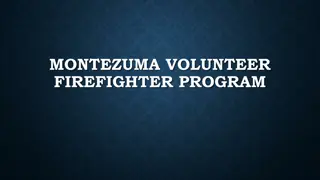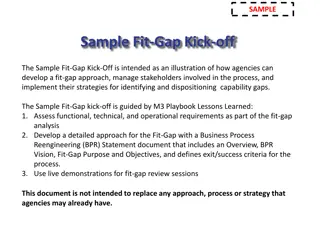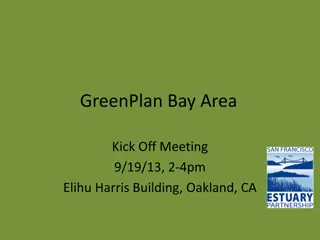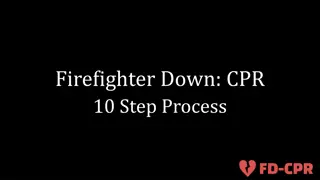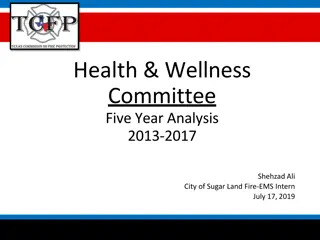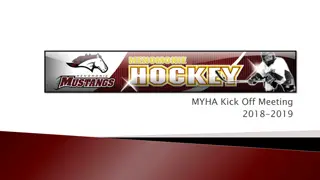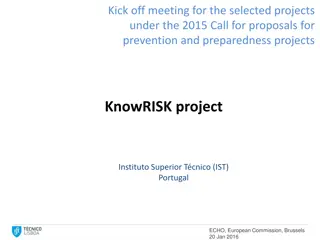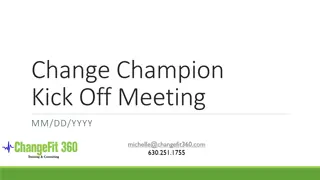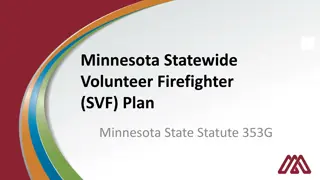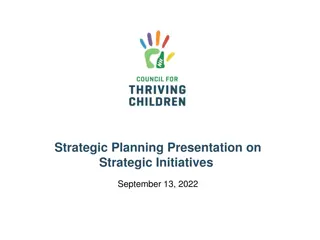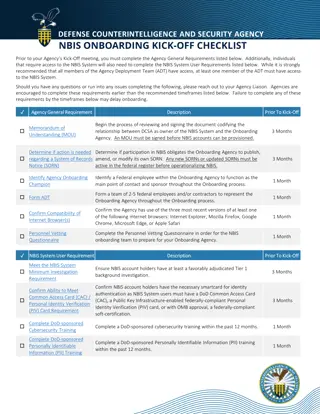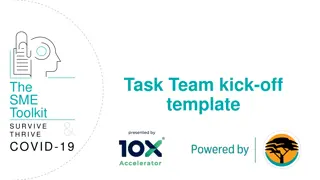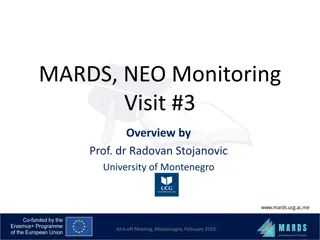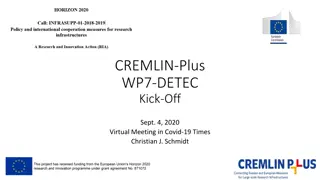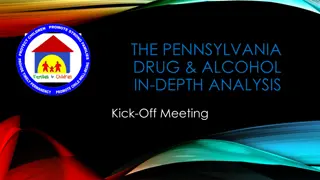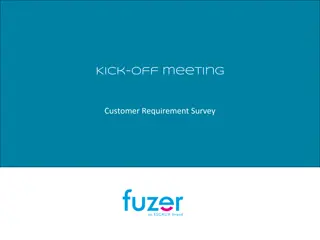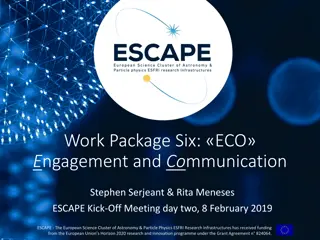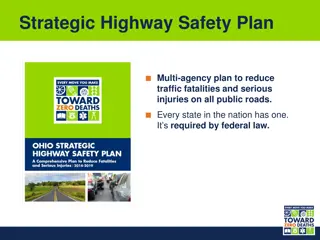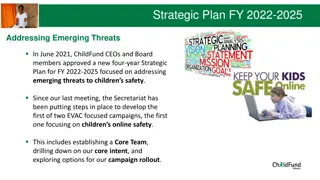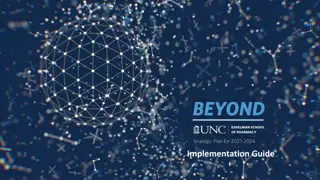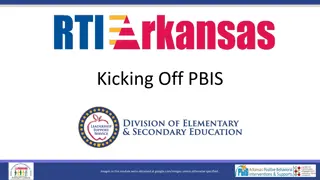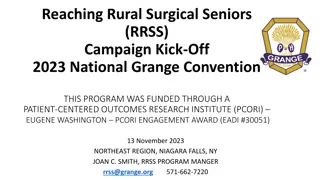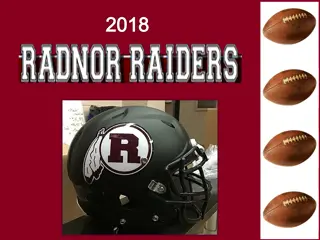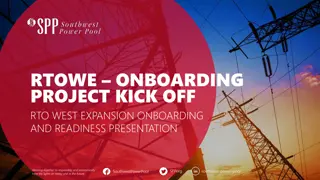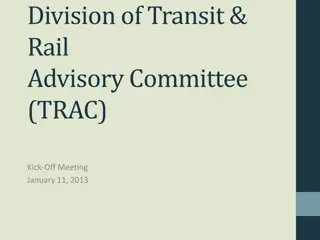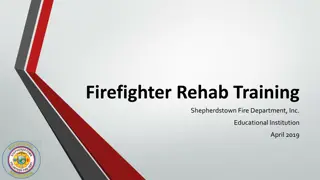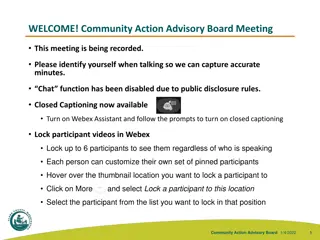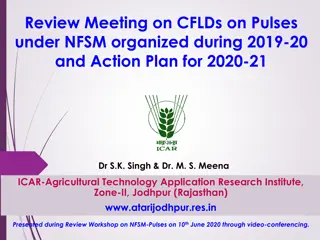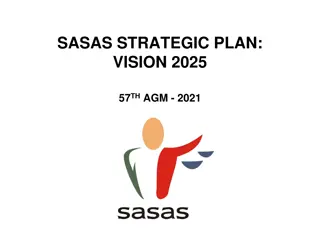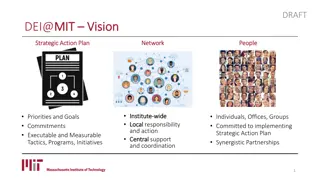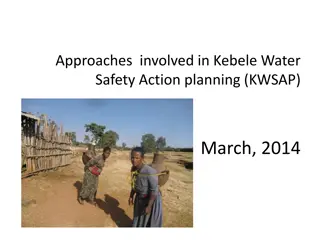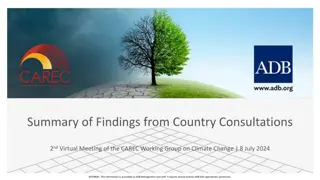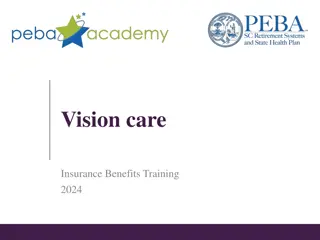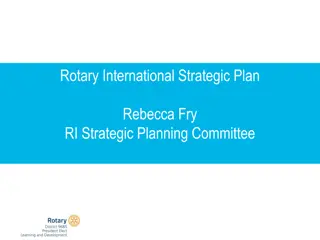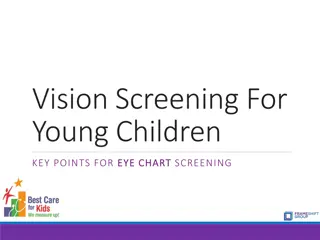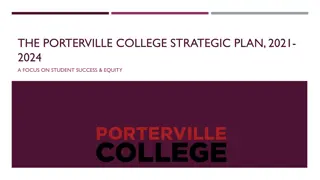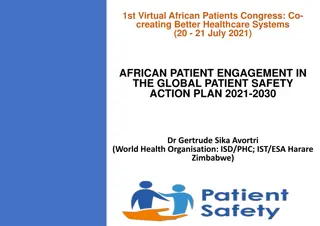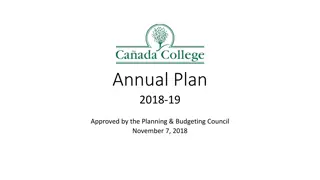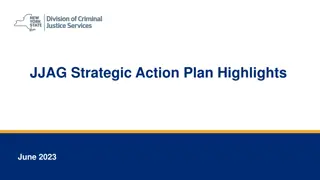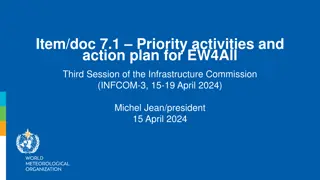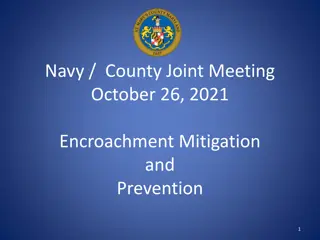Kick-Off Meeting for Strategic Vision Guide: Action Plan with 16 Firefighter Life Safety Initiatives
A detailed agenda including ground rules, presentation on strategic vision, categories for the vision, surveys, assignments, and communication plan for a departmental meeting aiming to institutionalize safety culture using the 16 Firefighter Life Safety Initiatives. The process is inspired by Kotter's Leading Change model, emphasizing the importance of strategic vision in driving cultural change and motivating action towards a safer environment for all.
Download Presentation

Please find below an Image/Link to download the presentation.
The content on the website is provided AS IS for your information and personal use only. It may not be sold, licensed, or shared on other websites without obtaining consent from the author. Download presentation by click this link. If you encounter any issues during the download, it is possible that the publisher has removed the file from their server.
E N D
Presentation Transcript
Kick-Off Meeting for the Strategic Vision Guide An Action Plan Using the 16 Firefighter Life Safety Initiatives Department Name/Logo Date
Agenda 1. Ground Rules 2. Presentation on Strategic Vision 3. Categories for our Strategic Vision 4. Surveys 5. Assignments and Deadlines 6. Communication to Department Members
1. Ground Rules Confidentiality Approaching conflict and difference of opinions respectfully Commitment to attending and participating in the meetings Letting go of the past What else?
2. Strategic Vision Overarching Goal of this Strategic Vision Process: To provide a roadmap to incorporate the 16 Firefighter Life Safety Initiatives in a fire department to institutionalize the safety culture into their programs and processes.
Kotters Leading Change Our process is based on John P. Kotter s book Leading Change and Dan S. Cohen s book The Heart of Change Field Guide: Tools and Tactics for Leading Change in Your Organization
Three Purpose of Strategic Vision According to John P. Kotter The Strategic Vision has the potential to break through all the forces that support status quo and to encourage the kind of dramatic shifts found in successful transformations. (Kotter) 1. Clarifies the general direction for change. Fire Service uses the term cultural change referring to safety so frequently that it may have lost some concrete meaning. When do we know we have met the goal of cultural change? What does the end-product look like?
2.Motivates people to take action in the right directioneven if the first few steps are painful. How to motivate people to take action that is out of their comfort zone, work with fewer resources and learn new behaviors and attitudes? People may be uncomfortable but the outcome of a safer environment is critical so that we do everything we can to ensure that Everyone Goes Home.
3.Helps effectively coordinate the actions of many people. The safety culture is often seen as the responsibility of the Safety Officer, or Chief Officers or the Department Chief. The stakeholders meeting will help set the stage that it is EVERYONE S responsibility.
Developing a Strategic Vision Creating a vision helps direct the change effort This approach is based on vision--a central component of all great leadership Why vision is essential Vision refers to a picture of the future with commentary on why people should strive to create that future (Kotter)
More often than not, people disagree with or are confused about the change and if it is even necessary Serves to facilitate major changes by motivating action that is not necessarily in people s short-term self interest Vision helps to align individuals, thus coordinating the actions of motivated people in a remarkable and efficient way With clarity of vision, managers and individuals can figure out for themselves what to do without constantly checking. Without a shared sense of direction, people can end up in constant conflict.
Effective Strategic Visions Imaginable: conveys a picture of what the future will look like Desirable: appeals to long-term interests of stakeholders Feasible: realistic and attainable goals Focused: clear enough to provide guidance in decision making Flexible: allows for individual initiative and alternative responses in light of changing conditions Communicable: easy to communicate; can be successfully explained within five minutes
A good vision can demand sacrifices, but never ignores, the legitimate long-term interests of the enterprise A good vision is an exercise of both the head and the heart, it takes some time, it always involves a group of people, and it is tough to do well
Our Process Simplified Kotter s 8-Step Process into a 4- Phased Process Phase One: Initiating Strategic Vision Phase Two: Creating Stratgic Vision Phase Three: Implementing Strategic Vision Phase Four: Monitoring
3. Categories for Our Strategic Vision Personnel (Focus: Safety, Health and Wellness) Community (Focus: Community Risk Reduction) Operations (Focus: Risk Management, Incident Management and Exposure Management) External (Focus: Grant Opportunities and Research) *Each of the 16 Firefighter Life Safety Initiatives was linked to one of these four categories (next slide).
Strategic Vision Guide Component FLSI Initiative Define and advocate the need for a cultural change within the fire service relating to safety; incorporating leadership, management, supervision, accountability and personal responsibility. Enhance the personal and organizational accountability for health and safety throughout the fire service. Strategic Vision FLSI #1 Personnel FLSI #2 Focus greater attention on the integration of risk management with incident management at all levels, including strategic, tactical, and planning responsibilities. All firefighters must be empowered to stop unsafe practices. Develop and implement national standards for training, qualifications, and certification ((including regular recertification) that are equally applicable to all firefighters based on the duties they are expected to perform. Operations FLSI #3 Operations FLSI #4 Operations FLSI #5 Develop and implement national medical and physical fitness standards that are equally applicable to all firefighters, based on the duties they are expected to perform. Personnel FLSI #6 Create a national research agenda and data collection system that relates to the initiatives. External FLSI #7 Utilize available technology wherever it can produce higher levels of health and safety. Operations FLSI #8 Thoroughly investigate all firefighter fatalities, injuries, and near misses. Grant programs should support the implementation of safe practices and/or mandate safe practices as an eligibility requirement. National standards for emergency response policies and procedures should be developed and championed. Operations FLSI #9 External FLSI #10 Operations FLSI #11 National protocols for response to violent incidents should be developed and championed. Operations FLSI #12 Firefighters and their families must have access to counselling and psychological support. Personnel FLSI #13 Public education must receive more resources and be championed as a critical fire and life safety program. Advocacy must be strengthened for the enforcement of codes and the installation of home fire sprinklers. Community FLSI #14 Community FLSI #15 Safety must be a primary consideration in the design of apparatus and equipment. Operations FLSI #16
4. Surveys We will be using surveys to get feedback from department members. Need the support of everyone to ensure that members take the time to submit the surveys. Determine how best to distribute surveys.
5. Assignments and Deadlines Strategic Vision Guiding Team 1. Strategic Vision Guiding Team Leader 2. Change Leader for Operations 3. Change Leader for Personnel 4. Change Leader for Community 5. Change Leader for External
Discussion regarding team members for the individual categories of the Strategic Vision Which categories need team members? How many team members? How will they be selected? Discussion on how the meetings will be scribed (one person or rotating)
Specific Assignments Survey Lead Logistics for Stakeholders Meeting
Next Steps Select date for next meeting (focus: Pre- Planning for Stakeholders Meeting) Select person to communicate results of this meeting to department members Anything else?


